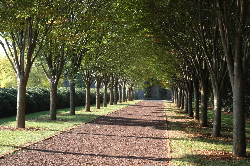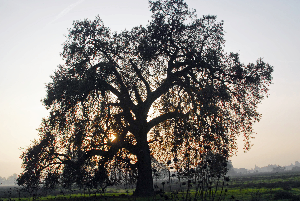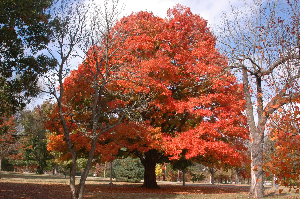Planting Trees in Arkansas

Shade trees that are properly located on your property can cut summer utility bills by 20 percent or more. For energy efficiency it is best to plant deciduous trees on the west side of your house. Trees planted in these locations provide shade during the intense heat of the day. If you use deciduous trees, they'll lose their leaves in the winter, allowing the sunlight in to help warm things up during the coldest times of the year. It will also help if you shade your air conditioner. This can increase the cooling efficiency by as much as 10%.
Best tree species for shade
There are numerous species of trees that make great shade trees, from many of the oaks, (including willow oak, shumard oak, cherrybark oak and pin oak), to tulip poplars, bald cypress, and even sweetgum.
Not only are these large trees giving us shade but they are also helping to clean the air. Leaves on trees absorb carbon dioxide, and filter pollutants from the air. They also catch airborne dust and dirt, and give off oxygen. Not only do they work on air pollution, but also noise pollution. They absorb sound, and can create a buffer between you and a busy street.
How trees prevent erosion
Tree roots are often blamed for many problems, but rarely thanked for controlling erosion. The canopy of the tree shelters soil moisture and helps in erosion, but so do the trees roots. Trees planted along a riverbank can slow the water and reduce flooding. If you live in an area with high winds, a diverse planting of trees can act as a windbreak if properly planted.
Popular trees in Arkansas home landscapes
Dogwoods have been the most popular blooming tree in Arkansas for years, but others are coming to the forefront now. For more sunlight look at the Kousa dogwood. There are sweetbay magnolias, golden raintree, chinese fringe tree and redbud. Japanese maples are popular under story trees and flowering cherries and crabapples are a nice addition to springtime color. We strongly urge citizens to NOT plant Bradford pear trees as they are considered invasive.

Tree Planting Tips
Now that you realize how valuable a resource trees are, consider planting one. The third Monday in March is the day we celebrate Arbor day in Arkansas.
Select a tree for your landscape based on what you need.
Do you need and have room for a large shade tree? Do you want a small under story tree for color? Before you plant a tree, look up. Make sure power lines are not going to interfere with growth. Try to locate trees no close than 15 feet from the foundation of your house. Check the drainage.
Trees come in three ways: balled in burlap, bare root or containerized. They also come in many sizes. Choose one that you can easily manage. For larger and more instant shade, there are now professionals with giant tree spades that can move large trees. Container grown plants can be planted any time you want to. Balled in burlap trees should be planted before the heat of summer sets in or again in the fall. Bare root trees need to be planted when they are totally dormant since there is nothing inside the plastic sleeve to sustain plant growth.

When you plant your tree, be sure to plant it at the level it is currently growing or slightly more shallow. Work up the planting hole wider than necessary to encourage the roots to spread out. Avoid amending the soil in just the planting hole, or you encourage the roots to stay in the planting hole. Avoid fertilization at planting, but do water well. Mulch around the tree to keep grass and weeds away which can compete with the young root system. And continue to water once a week all season to help the tree get established.
Additional Resources
- Planting and Caring for Trees
- Planting Trees | Around the Homestead Podcast episode
- Trees in Drought Article
- Crapemyrtle Database
Tree Publications
- Planting a Tree or Shrub
Fact Sheet outlining process of planting a tree or shrub.
- Landscape Trees for Specific Uses
Fact Sheet containing lists of trees for specific uses such as shade/lawn trees, street trees, and trees suitable under power lines.